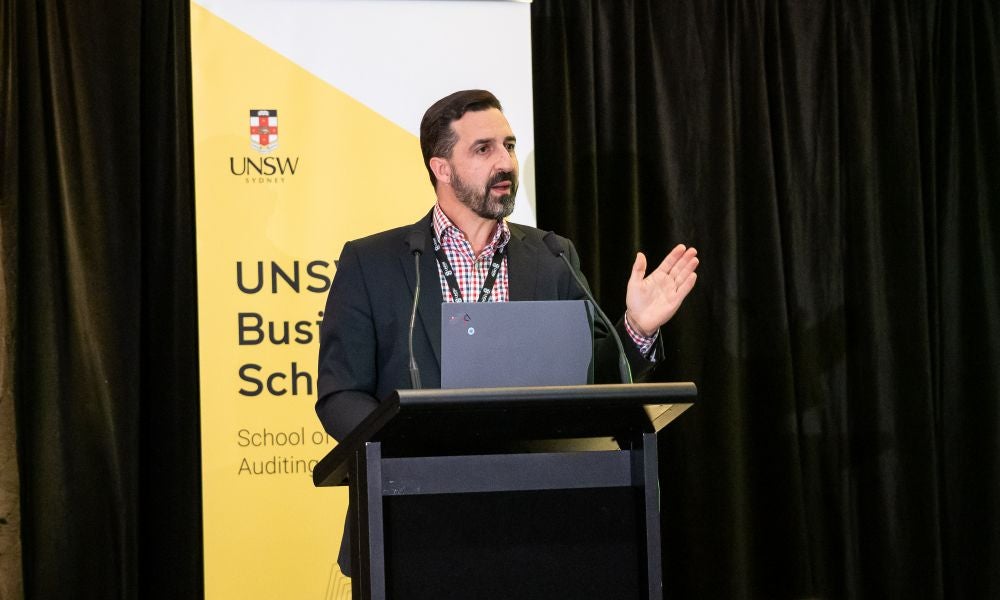Inside the mind of employee fraudsters: why they cross the line
New research into employee fraud motivations reveals key insights that can help businesses prevent internal fraud – before it occurs
Employee fraud is a costly and persistent problem, with global businesses losing an estimated 5% of their annual revenues to occupational fraud, according to the Association of Certified Fraud Examiners. Despite these staggering losses, many organisations continue to focus primarily on detection and punishment rather than prevention.
Employee fraud represents a significant challenge for organisations of all sizes. While many businesses focus heavily on controls and detection measures, far less attention is given to understanding the psychological underpinnings of why employees commit fraud in the first place. This gap in knowledge means organisations may be missing valuable insights that could help prevent fraudulent activity before it occurs.
The hidden narratives behind workplace fraud
New research shows that employee fraud offenders rarely fit the stereotypical profile of calculated criminals motivated purely by greed. It reveals complex justifications and excuses that offenders use to make sense of their actions. Published in Contemporary Accounting Research, the research is based on interviews with 30 serious employee fraud offenders who had defrauded their employers of amounts ranging from $136,500 to $21 million. These interviews provide unprecedented insight into how fraudsters rationalise their behaviour.
"Most fraud research in accounting has focused on controls rather than offenders' subjective experience, meaning that our understanding of motive in fraud remains underexplored," said Professor Paul Andon, Senior Deputy Dean (Education and Student Experience) at UNSW Business School, who conducted the research together with Professor Clinton Free from the Discipline of Accounting, Governance and Regulation at University of Sydney Business School.

Their study, A narrative analysis of the justifications and excuses of serious employee fraud offenders, found that 86% of fraud cases target employers directly, with asset misappropriation being the most common form. In contrast, financial statement fraud accounts for just 9% of cases, despite receiving considerably more attention in both academic research and media coverage.
“This study was motivated by the recognition that standard frameworks – such as the fraud triangle – offer only a partial understanding of offenders’ motives,” said Prof. Andon, who, together with Prof. Free, sought to extend these insights by exploring how occupational fraudsters derive motive through the narratives they construct around their actions. “By speaking directly with offenders, we aimed to uncover these narratives – stories that not only explained their behaviour but also helped initiate and sustain it,” said Prof. Andon.
How fraudsters find motives for their actions
The researchers identified six distinct narrative constructions that employees use to explain their fraudulent behaviour. These fall into two categories: justifications and excuses.
Justifications involve acknowledging responsibility while denying the wrongfulness of the conduct. One participant, John, who committed fraud through falsified invoices, explained: "I made a very clear decision the first time as to who would be the victims... I concluded that there wouldn't be real victims in this... no one would be hurt."
Read more: Employees behaving badly: how high CEO pay can encourage wider wrongdoing
This 'inconsequentiality motive' was common among offenders who convinced themselves their actions would not cause significant harm. Some pointed to their employer's strong financial position or lavish expenditure elsewhere in the organisation to minimise the significance of their offending.
Other justifications included what researchers termed 'permission motives', where offenders felt authorised to act as they did due to a permissive workplace culture. Benjamin, who falsified invoices at a large resources company, rationalised: "Over a period of time, I guess I justified it internally by saying, 'Well, you guys are f***king more crooked than what I'm thinking of doing.'"
The role of personal crisis in fraud behaviour
Many offenders described how personal crises overwhelmed their normal ethical boundaries. These excuses acknowledged the wrongfulness of their actions but diminished their responsibility.
Vanessa, who defrauded nearly $250,000 through falsified expense claims, described escaping a violent domestic situation: "I was in a long-term relationship which was quite abusive and violent... me and my kids pretty much had to run and leave the house... I was basically living in a storage shed trying to organise my life."

For many individuals, fraud was motivated by attempts to avoid losing status or reputation rather than financial gain itself. The research found that this fear of intangible losses often served as a more powerful motivator than actual financial pressures.
The gambling connection
A particularly concerning finding was the prevalence of gambling-related fraud. Nearly one-third of respondents referenced gambling in their narratives – a statistic consistent with Australia having the highest per capita gambling losses in the world at approximately $1000 per citizen annually.
William, who committed fraud through fraudulent disbursements, explained how gambling addiction drove his behaviour: "I'd used every dodgy loan-lender. I had people knocking at my doors... I had a $10,000 owing which I had no way of paying, and I had to pay it or I would have got severely bashed."
Building fraud-resilient organisations
The study's findings suggest that organisations need to look beyond technical controls to build truly fraud-resistant cultures. The researchers advocated for more employee-focused approaches to fraud prevention, including fair compensation, meaningful career development programmes, and effective staff wellbeing initiatives.
"Offender narratives may not capture the full array of influences that motivate actions. But like novels, narratives have hooks – shorthand descriptors for describing what seems essential from the offender's point of view," the researchers stated. Understanding these narratives provides valuable insights for organisations seeking to prevent fraud.
Subscribe to BusinessThink for the latest research, analysis and insights from UNSW Business School
The research also highlighted the value of using storytelling in fraud awareness training, suggesting that presenting offender accounts could be particularly effective in education settings. By exposing the speciousness of common motives for employee fraud, organisations may reduce the likelihood of employees adopting similar rationalisations.
“Building fraud-resilient organisations requires more than technical controls – it demands attention to the human side of risk,” said Prof. Andon. “Organisations need to foster cultures where ethical behaviour is consistently modelled and rewarded. This includes ensuring transparent grievance processes, addressing perceived unfairness in pay or promotion, and actively supporting employees through personal crises,” said Prof. Andon, who added that training programs that incorporate real offender narratives can also help dismantle narratives that make fraud seem acceptable.
Key takeaways for business professionals
For business leaders and risk managers, this research offers important insights into creating more fraud-resistant organisations:
- Recognise that employee treatment matters. Perceptions of unfairness in compensation or progression can create justification narratives that enable fraud. Ensure staff are fairly treated and understand ethical boundaries.
- Pay attention to personal circumstances. Many offenders described overwhelming life crises that preceded their fraud. Consider how employee assistance programmes might help staff navigate personal difficulties before they resort to unethical behaviour.
- Be aware of organisational culture. Permission motives indicate that unethical behaviour by leaders or colleagues creates an environment where fraud seems acceptable. Ethical role-modelling at all levels is essential.
- Consider the gambling connection. The strong link between problem gambling and fraud suggests organisations in high-gambling countries like Australia may need specific awareness programmes targeting this issue.

“A key takeaway from this study is that fraud is rarely about greed alone. It is often the culmination of perceived injustices, overwhelming personal circumstances, or harmful organisational cultures,” said Prof. Andon.
For industry professionals, he said the message is clear: prevention starts with understanding people. “Prioritising employee wellbeing, promoting ethical leadership, and being alert to signs of distress or addiction can all help reduce the risk of internal fraud. Of course, these actions also support broader organisational goals by fostering a healthier, more engaged, and resilient workforce,” he concluded.
